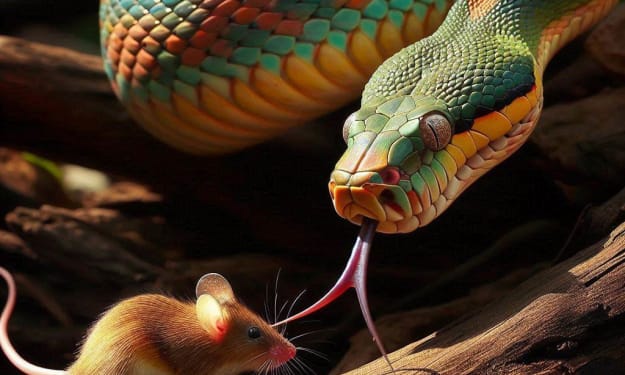The Astonishing World of Parrot Speech
Mimicry, Adaptation, and Communication

In 2010, an incredible story unfolded when a parrot, speaking with the same British accent as its owner, went missing. Four years later, they were reunited, but the parrot's voice had undergone a noticeable transformation—it now chattered away in Spanish. Parrots, along with a few other bird species, possess the ability to produce human speech, and some parrots excel at it uncannily well. But how is this possible?
Most wild parrots are highly social creatures that rely on vocalizations for various purposes. They use their voices for mating calls, territorial displays, and coordinating movements within their flocks. Some parrot species have flocks that continuously merge and split, requiring individual parrots to communicate effectively with many others. Contact calls play a crucial role in parrot interactions, allowing them to stay connected even when out of sight. However, the specific usage of these calls varies depending on the species and flock size. For instance, monk parakeets living in large colonies have individualized contact calls that help them stand out, while yellow-naped Amazon parrots, foraging in smaller groups, learn and share highly similar contact calls.
This need for sophisticated mimicry may partially explain why certain parrots, such as the yellow-naped Amazons, can closely imitate a wide range of sounds, including human speech. So, how does a parrot actually articulate phrases like "Polly wants a cracker"? While humans use their larynx, located at the top of the windpipe, to produce sounds, parrots rely on their syrinx, situated at the base of their windpipe. While many other birds possess two vibrating membranes within the syrinx, parrots, like humans, have just one. As sounds pass through the airway, parrots shape them using their tongues and beaks. Their tongues, especially flexible and powerful, aid in manipulating seeds and nuts, while their beaks, though rigid, possess highly flexible jaw joints, granting them control over the width and speed of beak movement.
Similar to other animals with learned vocalizations, parrot brains consist of interconnected regions that allow them to hear, remember, modify, and produce complex sounds. However, unlike songbirds that possess a single song system, almost all parrots have an additional circuit in their brains. Scientists hypothesize that this additional circuitry provides parrots with enhanced flexibility in learning the calls of their own species as well as mimicking human speech.
With their specialized anatomy, parrots can bark, scream, curse, and even recite specific information, such as their names and addresses. However, the question arises: do parrots genuinely understand what they are saying? When most captive parrots engage in speech, they are likely attempting to form social bonds in the absence of their own species. Many parrots may associate certain words with specific responses, explaining their capacity for profanity. However, especially after training, parrots have demonstrated the ability to use words appropriately in context, assign meaning to them, ask for treats, count objects, and even pose existential questions. For instance, Alex, an extensively trained African grey parrot, became the first non-human animal to ask what color he was, showcasing a remarkable comprehension of language.
While parrots continue to astound us with their abilities, their popularity has made them vulnerable. Poaching and the pet trade pose significant threats, while deforestation has led to a dramatic decline in their natural habitats. To truly understand the world of parrots, it is crucial to preserve their natural environments and conduct further studies in the wild.
In conclusion, the fascinating world of parrot speech encompasses mimicry, adaptation, and complex communication. These remarkable birds captivate us with their ability to imitate human speech and display an understanding of language. Understanding and conserving their natural habitats is essential for unraveling the secrets of parrot communication and ensuring their survival in the wild.
Henrik Leandro
About the Creator
Henrik Leandro Laukholm Solli
Free thinker, traveler and humanist <3






Comments (1)
so interesting, I didn't know it was like that